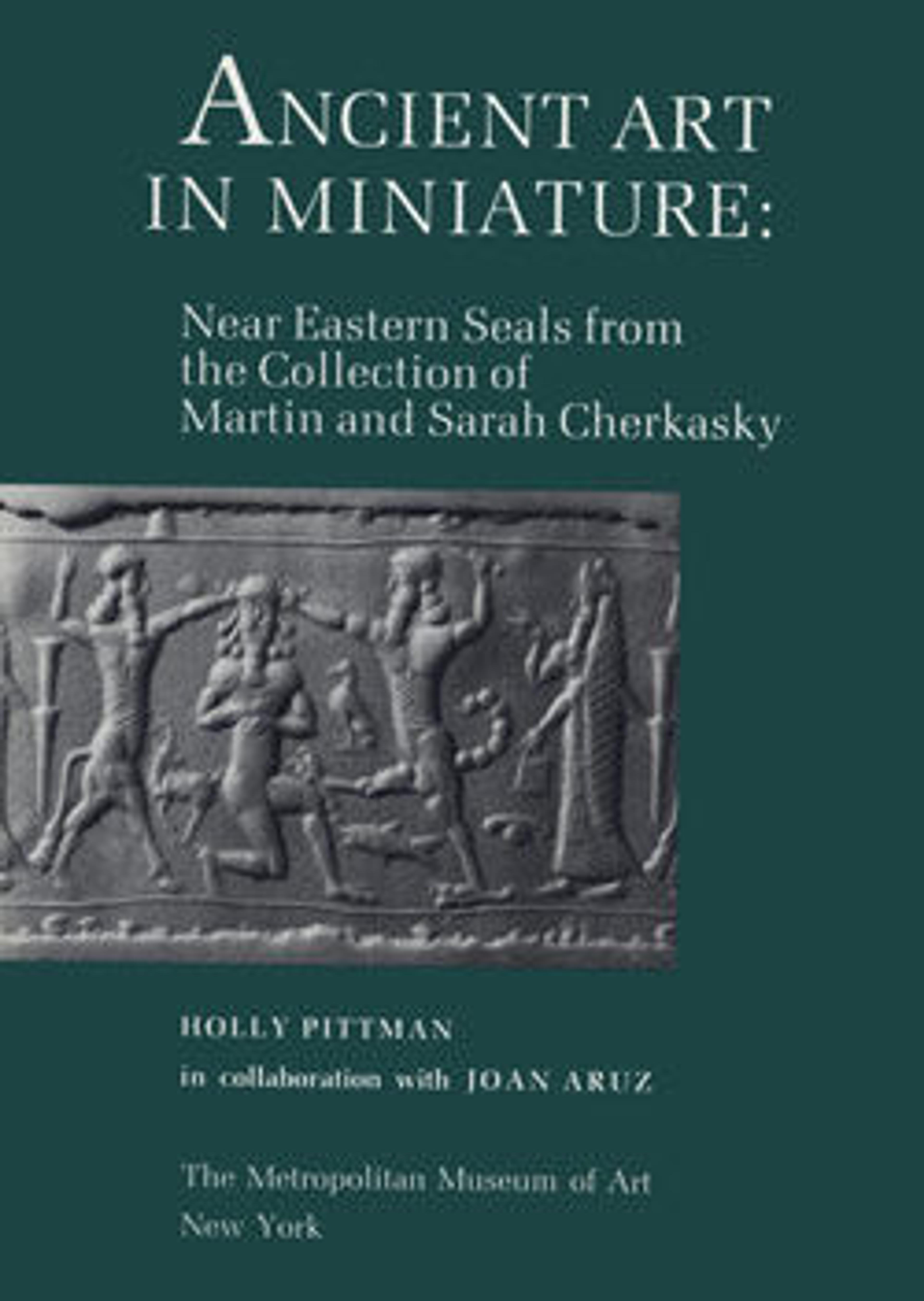Cylinder seal and modern impression: banquet scene with seated figures drinking a liquid through straws
Although engraved stones had been used as early as the seventh millennium B.C. to stamp impressions in clay, the invention in the fourth millennium B.C. of carved cylinders that could be rolled over clay allowed the development of more complex seal designs. These cylinder seals, first used in Mesopotamia, served as a mark of ownership or identification. Seals were either impressed on lumps of clay that were used to close jars, doors, and baskets, or they were rolled onto clay tablets that recorded information about commercial or legal transactions. The seals were often made of precious stones. Protective properties may have been ascribed to both the material itself and the carved designs. Seals are important to the study of ancient Near Eastern art because many examples survive from every period and can, therefore, help to define chronological phases. Often preserving imagery no longer extant in any other medium, they serve as a visual chronicle of style and iconography.
The modern impression of the seal is shown so that the entire design can be seen. The imagery on this seal depicts a so-called banquet scene in two registers. In the top register a standing attendant faces a seated figure, both with arms raised. Two seated figures face each other and drink liquid from a vessel through drinking tubes. In the lower register, a standing attendant holding a spouted vessel faces a seated figure raising a vessel and holding an unidentified object. Behind the seated figure, another figure stands next to a square structure topped by three triangular projections. The latter could be interpreted as tetrahedrons, pyramidal dice used to play board games, like the Royal Game of Ur, the Sumerian version of the game of twenty squares. Examples of tetrahedrons were found in the Royal Cemetery at Ur with boards, gaming pieces and four-sided sticks, another type of dice. Depictions of players are very rare in ancient Near Eastern art unlike in Egyptian art, may be because some playing scenes are not identified yet.
The modern impression of the seal is shown so that the entire design can be seen. The imagery on this seal depicts a so-called banquet scene in two registers. In the top register a standing attendant faces a seated figure, both with arms raised. Two seated figures face each other and drink liquid from a vessel through drinking tubes. In the lower register, a standing attendant holding a spouted vessel faces a seated figure raising a vessel and holding an unidentified object. Behind the seated figure, another figure stands next to a square structure topped by three triangular projections. The latter could be interpreted as tetrahedrons, pyramidal dice used to play board games, like the Royal Game of Ur, the Sumerian version of the game of twenty squares. Examples of tetrahedrons were found in the Royal Cemetery at Ur with boards, gaming pieces and four-sided sticks, another type of dice. Depictions of players are very rare in ancient Near Eastern art unlike in Egyptian art, may be because some playing scenes are not identified yet.
Artwork Details
- Title:Cylinder seal and modern impression: banquet scene with seated figures drinking a liquid through straws
- Period:Early Dynastic III
- Date:ca. 2600–2350 BCE
- Geography:Mesopotamia
- Culture:Sumerian
- Medium:Gypsum alabaster
- Dimensions:1 3/8 in. (3.6 cm)
- Credit Line:Rogers Fund, 1956
- Object Number:56.157.1
- Curatorial Department: Ancient West Asian Art
More Artwork
Research Resources
The Met provides unparalleled resources for research and welcomes an international community of students and scholars. The Met's Open Access API is where creators and researchers can connect to the The Met collection. Open Access data and public domain images are available for unrestricted commercial and noncommercial use without permission or fee.
To request images under copyright and other restrictions, please use this Image Request form.
Feedback
We continue to research and examine historical and cultural context for objects in The Met collection. If you have comments or questions about this object record, please contact us using the form below. The Museum looks forward to receiving your comments.
